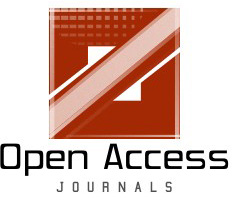Download
Cover Page IJESM_November_2020......
PARTICULAR
|
Page No.
|
 FINDING SINGLE AND MULTIVARIABLE INTEGRATING
FACTORS TO SOME NON-EXACT DIFFERENTIAL EQUATIONS
FINDING SINGLE AND MULTIVARIABLE INTEGRATING
FACTORS TO SOME NON-EXACT DIFFERENTIAL EQUATIONS
ASANTE KWAME OTU GYEKE
Abstract:
Finding integrating factors is a method of solving non-exact differential
equations. In this paper, the problem of finding integrating factors was stated
clearly. Assumptions were made, and solutions were proposed under these
assumptions. Specifically three cases were given, and then solutions were
given for each case. The first two cases arrived at already existing methods.
The third case described a new method for finding an integrating factor,
provided some specific conditions are met. The first two cases describe
methods for finding single variable integrating factors, whiles the third case
describes a method for finding a multivariable integrating factor. In addition,
some examples were given for the third case to demonstrate the use of the
new method in finding integrating factors
Download full Lenght Paper......
|
1-4
|
 A PILOT STUDY OF TROPOSPHERIC OZONE CONCENTRATION OVER PUNE BY
USING EVA SPECTROMETER
A PILOT STUDY OF TROPOSPHERIC OZONE CONCENTRATION OVER PUNE BY
USING EVA SPECTROMETER
Swati S. Godse
Abstract:
Tropospheric ozone is also commonly known as ground-level
air pollutants which are produced due to the fast development
of the economy and society around the world. In our modern
society ozone is considered a substance that touches on our
society in many ways. [1] This work aims to use the EVA
spectrometer for estimation of the ozone concentration and
ozone column density over Pune. It consists of input variables
such as relative humidity, temperature, the concentration of
ozone, the concentration of nitrogen dioxide, column density
of nitrogen dioxide, column density of ozone, air mass factor
obtained from routine monitoring, and the data recorded. The
preliminary findings show that the meteorology conditions and
emission patterns play an important part in influencing the
ozone concentration. However, a particular system is
appropriate sufficient to evaluation the concentration in spite of
any situations. Thus, it can be concluded that the EVA
spectrometer is able to give reliable and satisfactory
estimations of ozone concentration. [3]
Download full Lenght Paper......
|
5-11
|
 FINDING CURRENT OF AN ELECTRICAL CIRCUIT USING
GRAPH THEORETIC APPROACH AND NORTON’S THEOREM
FINDING CURRENT OF AN ELECTRICAL CIRCUIT USING
GRAPH THEORETIC APPROACH AND NORTON’S THEOREM
Chanchal Boruah
Abstract:
Graph theory is a branch of mathematics where we study about some
relations between the objects. So it has many direct applications in real life
problems. In Electrical circuit analysis also, different electrical elements are
connected in a particular way. So both can be analysed with the help of each
other. An electrical circuit can be represented by graph. From graph we can
obtain different matrices. These matrices satisfy some matrix equilibrium
equations of electrical circuit analysis. From these equations we can find
many relatins between currents and voltages of electrical circuits. In our
previous paper we analysed currents in a circuit with the help of Thevenin’s
theorem and graph theory. In this paper, branch currents of an electrical
circuit with unknown resistances and voltage are obtained using network
equilibrium equations and then it will be verified by Norton’s theorem.
Download full Lenght Paper......
|
12-20
|
 SOME COMPARISON THEOREMS IN DIFFERENCE EQUATIONS.
SOME COMPARISON THEOREMS IN DIFFERENCE EQUATIONS.
DR. S. R. GADHE
Abstract:
In the present paper we discuss some comparison theorems approximate
solutions, bounded and uniqueness in difference equations.
Download full Lenght Paper......
|
21-28
|
 THE ADVANTAGE OF THE APPLICATION OF X-RAY ABSORPTION
SPECTROSCOPY
THE ADVANTAGE OF THE APPLICATION OF X-RAY ABSORPTION
SPECTROSCOPY
RAKESH KUMAR RANJAN
Abstract:
X-ray absorption near-edge structure (XANES) and extended X-ray absorption fine
structure (EXAFS),is a type of absorption spectroscopy that indicates the feature in the X-ray absorption Spectra (XAS) of condensed matter due to the photo absorption cross
section for electronic transitions form an atomic core level to final state in the energy
region 50-100 ev above the selected atomic core level ionization energy. The K edge x-ray
absorption spectrum of most elements of the periodic table can be performed through full
multiple scattering calculations. Then, on the basis of a linear combination of the XANES
spectra of reference compounds, the presence of the different phases present inside the
materials can be quantified. Here, we show that for nanometer scale metallic clusters, it is
not sufficient to consider only the electronic state of the metal of interest to perform a
linear combination analysis. In the case of these peculiar materials, special attention has
to be paid to different structural parameters, for example, the size and morphology of the
cluster, the interatomic distance (taking into account contraction/dilatation processes),
and the presence of hetero metallic bonds (in the case of bimetallic clusters). Moreover,
this approach is not specific to the metallic state. As a conclusion, the quantitative
measurement of the structural parameters coming from EXAFS analysis constitutes an
invaluable starting point for the FEFF-PCA simulation. The advantages and limitations of
the methods are discussed. Recent advances in extended EXAFS and polarized EXAFS
using oriented membranes and single crystals are explained. Developments in theory in
understanding the XANES spectra are described. The application of X - ray absorption
spectroscopy to the study of the Mn4Ca cluster in Photosystem II is presented.
Download full Lenght Paper......
|
29-39
|
 OA Study of Poly-Basic Hypergeometric Functions And Their Applications
OA Study of Poly-Basic Hypergeometric Functions And Their Applications
Dr.Brijesh Pratap Singh
Abstract:
It's becoming more common for hypergeometric functions to be used in fields such as
Statistics. There is an introduction to the q-hypergeometric series, or basic hypergeometric
series, in the course notes, as well as some basic summation and transformation findings.
An attempt has been made to create equations for basic and polybasic hypergeometric
series using a known identity and summation formulae for truncated q-series
Download full Lenght Paper......
|
40-46
|
 DIFFERENT NORMS OF SUBSPACES CREATED BY NORMED VECTOR SPACES OF
GENERALIZED MULTIPLE HYPERGEOMETRIC FUNCTION USING MATLAB
DIFFERENT NORMS OF SUBSPACES CREATED BY NORMED VECTOR SPACES OF
GENERALIZED MULTIPLE HYPERGEOMETRIC FUNCTION USING MATLAB
Pramod Joshi
Abstract:
This article attempts to generate the normed vector space of generalized hypergeometric function
as its elements V={ }
from different generalized hypergeometric as well as multiple hypergeometric functions and found
the different norms of these subspaces by using MATLAB.
Download full Lenght Paper......
|
47-53
|




 Call for Papers
Call for Papers












